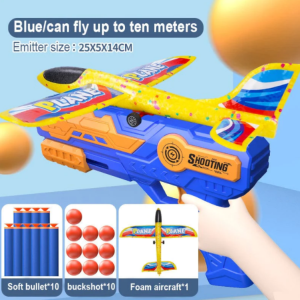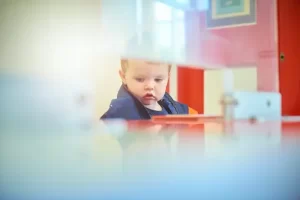This blog post is especially written for parents looking for creative ways to nurture your preschooler’s curiosity and prepare them for the best preschool experience. Here we will throw light into the exciting world of STEM activities for preschoolers, helping them develop a love for Science, Technology, Engineering, and Math skills. These activities are not only fun but also incredibly educational. So, let’s get started on your quest to provide your child with the best preschool experience possible!
Why STEM Matters in Preschool
Before moving into taking up specific activities, you need to understand why STEM education is essential during the preschool years:
1. Building a Strong Foundation
It helps build a solid foundation to future studies.Preschool is the ideal time to lay a strong foundation for STEM subjects, as young minds are eager to learn and explore more and more.
2. Problem-Solving Skills
STEM activities encourage kids to think critically and solve problems independently, which is a must have skill for future success.
3. Fostering Curiosity
Engaging in STEM activities cultivate curiosity in their minds and encourages a lifelong love for learning.
4. Preparing for the Best Preschool
Preparing your child with STEM skills can give them a significant advantage as your kid will already be aware of the basics and will have an added advantage when enrolling in preschools.
Now, let’s move on to some exciting STEM activities suitable for preschoolers.
Science Activities
1. Exploring the Magic of Colors
- Gather colorful objects and let your child sort them by color.
- Teach them to experiment with mixing primary colors to create new ones.
- Ask them to observe the changes when mixing watercolors.
2. Nature Scavenger Hunt
- Go on a nature walk and find leaves, rocks, and insects.
- Talk about the shapes, colors, and sizes of the objects.
- Encourage your child to ask questions about what they discover.
3. Sink or Float
- Gather a variety of objects (e.g., toys, fruits, and household items).
- Predict if each item will sink or float in a basin of water.
- Record the results and discuss why things float or sink.
Technology Activities
1. Introduction to Tablets
- Let your child explore age-appropriate apps and games on a tablet.
- Discuss how technology can be used for learning and entertainment.
- Set time limits to ensure a balanced screen time experience.
2. DIY Keyboard Exploration
- Give your child a disconnected keyboard.
- Teach them about letters, numbers, and the different keys.
- Encourage them to type their name or other simple words.
3. Simple Coding Games
- Introduce coding concepts through fun games and apps.
- Use tangible items like building blocks to create simple code sequences.
- Discuss how these codes make things happen on the screen.
Engineering Activities
1. Build a Fort
- Use pillows, blankets, and cushions to create a fort.
- Discuss the engineering concepts of stability and balance.
- Let your child’s imagination run wild as they design their dream fort.
2. Paper Airplane Challenge
- Teach your child how to fold and create paper airplanes.
- Experiment with different designs and flight paths.
- Discuss the principles of lift, thrust, and aerodynamics.
3. LEGO Creations
- Encourage your child to build structures and vehicles with LEGO.
- Discuss how different pieces fit together to form a larger structure.
- Challenge them to create something specific, like a house or a car.
Math Activities
1. Counting and Sorting
- Use everyday objects like toys, buttons, or fruit to practice counting.
- Sort these objects by color, shape, or size.
- Develop your child’s understanding of numbers and categories.
2. Measuring Fun
- Explore measurements using common items like cups, spoons, and rulers.
- Bake together and discuss the importance of precise measurements in recipes.
- Talk about concepts like more or less and bigger or smaller.
3. Shape Hunt
- Go on a shape hunt in your home or neighborhood.
- Point out and name different shapes you see.
- Discuss how shapes are used in everyday objects, such as street signs and windows.
Tips for the Best Preschool Experience
1. Encourage Exploration
- Allow your child to explore and experiment freely.
- Ensure that they are worry free of creating messes – they’re part of the learning process!
2. Be a Supportive Guide
- Offer help and explanations when needed, but encourage them to do everything on their own rather than you helping them.
- Let them discover and learn through hands-on experiences.
3. Foster a Growth Mindset
- Praise effort and perseverance rather than just the end result.
- Encourage your child to embrace challenges and learn from mistakes. This will make them confident in facing the problems.
4. Keep It Fun
- Remember that the primary goal is for your child to enjoy learning.
- Incorporate games, storytelling, and rewards to make STEM activities engaging.
By incorporating these STEM activities into your preschooler’s daily routine, you’re not only setting them up for the preschool experience but also helping them develop valuable skills that will benefit them throughout their lives. The journey of exploration and learning starts now, and with your guidance, your child is on their way to becoming a STEM enthusiast.
Give your child the head start they deserve by making STEM a fun and integral part of their early education. Together, we can prepare them for preschool and a bright future filled with endless possibilities!





